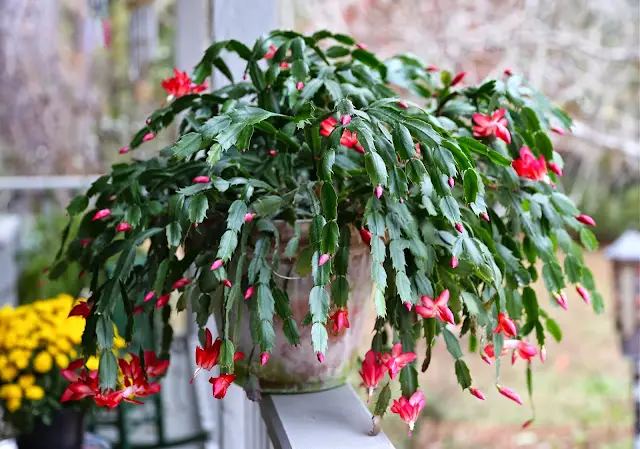Often we, and many information sources, substitute two concepts for each other: cactus and succulent. This statement is erroneous because cacti and succulents are not the same from a biological point of view.
And starting to understand this issue, you can get even more confused: it turns out that not all succulents are cacti, but not all cacti are succulents either …

Forest cacti, in particular zygocactus (Christmas Cactus, Schlumberger, Christmas tree), can be called succulents. This article is an attempt to understand and get an answer to the question: “Is the Christmas Cactus a cactus or a succulent?
What is difference in Cactus vs Succulent?
Succulents are plants that have a special tissue (parenchyma) for water storage, as well as a number of physiological adaptations for their rational use in drought. Succulents are not a group, family, or any other taxonomy-related concept.
Reference! Succulents are a morphological characteristic that unites drought-resistant plants that have nothing in common.
In total, about 15,000 species of succulents are known, belonging to 80 families:
- Cactus.
- Crassy.
- Orchid.
- Agave.
- Bromeliads, etc.
Their habitat is extremely extensive: Africa, America, the Canary Islands, the Mediterranean countries; succulents can be found both in the desert and in the tropical forest (epiphytes, hatiors, ripsalidopsis).
The most common mechanisms for saving moisture in succulents are their leaves: small in size, often rounded, the leaves are covered with a thick epidermis (cuticle), sometimes with a waxy or hairy cover.
In cacti (though not all), the leaves are reduced to thorns. This is the main difference between cacti and succulents: thorns or hard shields of a cactus are a defense mechanism against animals, while succulents do not have such protection.
Another difference: succulents’ water supply is found mainly in leaves and roots, which can reach incredible length, and in a cactus – in a thick and powerful stem, which has an unusual shape: cylindrical, spherical, ribbed.
Check out guide on Can You Propagate Christmas Cactus.
why Christmas plant is Cactus?
From a biological point of view, there are 5 main characteristics that make it possible to call a Christmas plant a cactus:
- All cacti are dicotyledonous: their seeds have two cotyledons.
- These plants are perennial succulents, but there are exceptions.
- Cacti have a special organ – the areola. This organ is analogous to the shoot of deciduous plants. The lower and upper parts of the areola have their own functions: buds appear on the upper part and branching occurs (in some species), spines are located on the lower part.
- The ovary of the fruit of the cactus is lower: the part of the flower on which the fruit will develop after fertilization is located below the petals.
- Their fruit is a berry, the small seeds of which are contained in the pulp, covered with a leathery shell.
Is Christmas Cactus A Succulent or not?
It is difficult to answer this question unequivocally. One of the names of the flower zygocactus directly refers to the plant to the “prickly” family. But the Christmas Cactus does not have these very thorns, as well as a powerful, thick stem. Cacti grow on poorly nutritious sandy soils, Schlumberger prefers loose nutritious soil.
Attention! Although in his appearance and “habits” the Christmas Cactus does not look like a cactus, nevertheless he is.
The fact is that Schlumberger belongs to the species of forest epiphytic cacti, and its homeland is the tropical forests of Brazil.
Clinging with roots to crevices in the bark, the epiphyte grows on tree trunks under their spreading crown.
The Christmas Cactus has a poorly developed root system, no leaves, and the stem is flat segmented segments.
Zygocactus captures all nutrients and moisture from the air with the help of air roots and segments, in which it can store the necessary reserves.
Thus, the Christmas Cactus is a cactus, but a florist who decides to have a Christmas tree at home should not forget that he has an unusual “prickly” representative in front of him.
So that the plant does not die and pleases every year with bright and lush flowering, it needs to provide care that is radically different from caring for cacti: the latter love drought and sun, zygocactus – regular watering and the absence of scorching sun rays. Only by taking these features into account can you create comfortable conditions for an exotic plant.
